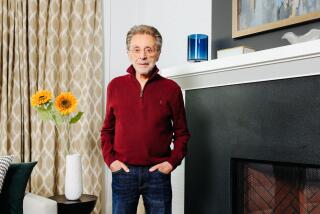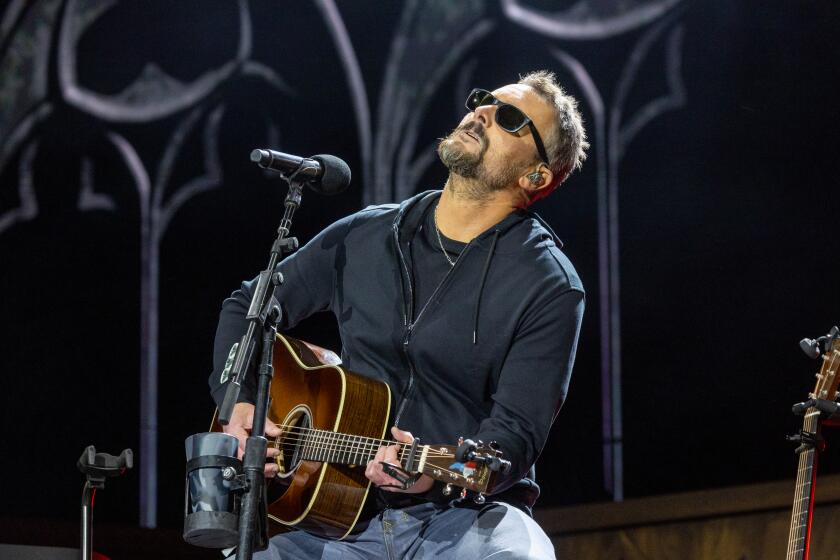Jazz Guitarist No Clone : SAN DIEGO COUNTY
Hundreds of articles have been written about guitarist Barney Kessel.
Most of them have described Kessel, 67, as the successor to Charlie Christian, who died in 1942. But Kessel is much more than a Christian clone, and he gets miffed when his many accomplishments are overlooked.
Kessel, who moved to San Diego just last year, sat down over lunch near his University Heights home recently to talk about his contributions and his music, which is in constant demand. (Tonight and Saturday he will make his first county appearance in the debut jazz show at the Wall St. Cafe and All That Jazz in Rancho Bernardo.)
Elsewhere this year, he has played Germany, Italy, England, Sweden, France and Spain. Two weeks ago, he appeared at the Rose City Jazz Party in Portland.
His last album was “Red Hot and Blues,” a 1988 session with vibraphonist Bobby Hutcherson, pianist Kenny Barron, bassist Rufus Reid and drummer Ben Riley that mixed standards and more obscure compositions by others with several of Kessel’s songs.
But it was his place in the annals of jazz that Kessel wanted to discuss.
Kessel concedes that Christian was his main inspiration early. They even spent three days in 1939 trading licks in Muskogee, Okla., Kessel’s home town. Benny Goodman’s band had temporarily disbanded, leaving Christian with time on his hands. Kessel, then 16, was already playing professionally in a big band.
“I was knocked out by him,” Kessel said.
In Christian, he found a soul mate who also wanted to emulate saxophonist Lester Young’s warm, sinuous melodic lines.
“I did play like Charlie at one time, but I started moving away soon after we played together,” Kessel said.
He leaned forward and stabbed the table with his index finger as he listed what he considers to be his most important contributions to jazz.
“I was the first to have a piano-less trio, to push the guitar into the limelight. That was 1957, for (producer) Norman Granz, when I signed with Contemporary. Before those records came out, no one played that way.
“On the (1955) album ‘Cry Me A River’ with Julie London, we used guitar and bass only, and it was the first time anyone had played guitar accompaniment for a vocalist to sound like an orchestra. That’s never been brought out.
“Aside from Chick Webb in the ‘30s, I was the first to use flute in a jazz setting. I used Bud Shank on an album in 1953. And I was the first and maybe the only one to use the oboe in jazz.
“I wrote a jazz version of the opera ‘Carmen’ that we recorded with Andre Previn on piano. I’ve done a ton of interviews, and none of these things come out.”
Through the decades, he recorded more than 40 albums as a leader and several more with Sarah Vaughan, Roy Eldridge, Billie Holiday, Fred Astaire, Artie Shaw, Lionel Hampton, Lester Young, Oscar Peterson, Art Tatum and other jazz greats.
Kessel was among the first guitarists to go electric. He remembers how exotic this seemed to people in 1938, especially in Muskogee.
“At one time, I was the only one within a radius of 400 miles with an electric guitar. Before that, I had to hold my guitar up to a mike to be heard. The tubes in the amp used to glow. They’d get so hot, people would come up and say things like, ‘I guess you could cook some eggs on that, couldn’t you?’ ”
Electrified, the guitar could stand out like a saxophone or trumpet, and Kessel paved the way for guitarists as front men, instead of background rhythm section players. Guitar technology hasn’t progressed much since 1938, according to Kessel, who still uses a much-altered Gibson guitar he bought in 1946, equipped with a 1939-vintage pickup wound with cobalt and copper wire.
“That kind of quality does not exist anywhere in the world today,” Kessel said. “Take coins. You drop one today, it sounds like a button. The old ones would ring like a bell.”
Like coins, Kessel doesn’t think the new generation of jazz players is as solid as earlier ones.
“Maybe the younger people don’t know the history of jazz beyond John Coltrane,” he said. “They think he fell out of a tree one day and started playing.”
And too many young players, he said, copy the sound of a Charlie Parker or Ben Webster without developing styles of their own.
Kessel was working on his own approach while still in his teens. He joined Chico Marx’s orchestra in 1942, and in 1944, appeared in “Jammin’ the Blues,” a jazz documentary that took the top prize in its category at the Cannes Film Festival that year. By the early ‘40s, Kessel had moved to Los Angeles, where he spent a good part of the next 30 years doing anonymous studio work for films, television and commercials before switching to full-time jazz in 1972.
During those years, he worked with Frank Sinatra and Marilyn Monroe, played in the band for Judy Garland’s television show, and on the sound track for the movie, “Cool Hand Luke,” among many other jobs.
“I was making a living, but I was not playing jazz. In 1972, I wanted to start a new chapter. I wanted to be able to take my guitar out of the case and always be me, not a guy doing a dog-food commercial.”
The cover charge for Kessel’s show is $10, and doors will open at 6:15 for the show, which starts at 8 p.m. Light food will be available.
More to Read
The biggest entertainment stories
Get our big stories about Hollywood, film, television, music, arts, culture and more right in your inbox as soon as they publish.
You may occasionally receive promotional content from the Los Angeles Times.






